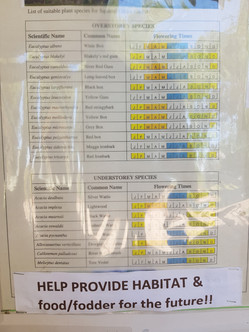Squirrel Gliders - a captive breeding project
- Tanya Bohollow

- Feb 7, 2019
- 3 min read
Squirrel gliders are an adorable marsupial that has found them selves in a bit of strife.
They are an adorable little animals that belongs to a group called Petauridae, some of the other possums in this family are the rare Leadbeater's Possum and Yellow-bellied Glider and the very closely related (and sometimes difficult to differentiate) Sugar Glider.
Squirrel Gliders live in dry sclerophyll forest and woodland in south-east Australia but is absent from the coastal ranges. The more northern populations of the species can be found along the coast as well as wet forests that boarder rainforests.
Squirrel Gliders have a wide range of foods that it likes to eat. The feed on insects, nectar, sap, pollen, seeds and gum from Acacia species.
Old trees are very important for gliders because they make their leaf lined nests in tree hollows. They live in family groups and hate to be alone.
Remnant vegetation such as that on road side corridors and along rivers and creeks as well as remnant paddock trees are of vital importance to Squirrel Gliders. These trees serve not only for gliders to live in, but to move along to new territories and for breeding to increase genetic variation.
A couple who hail form nearby Strathallan have taken to the task of helping Squirrel Gliders. They want to captive breed a diverse number of gliders and release them into the wild to increase their numbers in suitable areas. Veronica and John Groat begun a breeding program a couple of years ago and have had great success, this season they have increased their own colony by 10!
Their most recent project at Strathallan Glider Sanctuary was to build a flight cage to increase their gliders gliding capacity before releasing them into the wild. Kirsty and I attended the opening of the flight cage and we got to meet many of the residence there, both captive bred and those utilising the nesting boxes around the property.
Veronica and John are completely self funded so if you would like to help the, they have a fund raiser on facebook to help their Squirrel Glider release project;
https://www.facebook.com/donate/956750078037646/2279659125626881/
Or contact them direct on their Campaspe Squirrel Gliders page;
https://www.facebook.com/campaspesquirrelgliders
Glossary
Acacia sp. - Wattles.
Canopy - the upper layer of plants in the habitat.
Differentiate - recognise what makes something different.
Dry sclerophyill Forest - Dry sclerophill forest is a vegetation type with moderately tall Eucalypt trees along with trees such as Acacia sp. (wattles). The canopy is reasonably open that lets in some light. The ground layer can be grassy or shrubby. This vegetation type is what you will find the most around Shepparton.
Genetic diversity - Genetic diversity (or genetic variation) describes how closely related the members of one species are in a given ecosystem. In simple terms, if all members have many similar genes, the species has low genetic diversity. Because of their small populations, endangered species may have low genetic diversity due to inbreeding. This can pose a threat to a population if it leads to inheritance of undesirable traits or makes the species more susceptible to disease. Having high genetic diversity helps species adapt to changing environments. (sciencing.org).
Remnant - a part that is left after the rest has been used or taken away. So in terms of vegetation, remnants are parts of forests that have been left (or planted) after clearing for housing or (more commonly) for agriculture.
Sclerophyll - type of vegetation characterised by hard, leathery, evergreen foliage that is specially adapted to prevent moisture loss. Much of inland Australia's vegetation is sclerophyllous, including species such as eucalyptus, Acacia, Banksia and Callistemon (bottlebrush).



























Comments